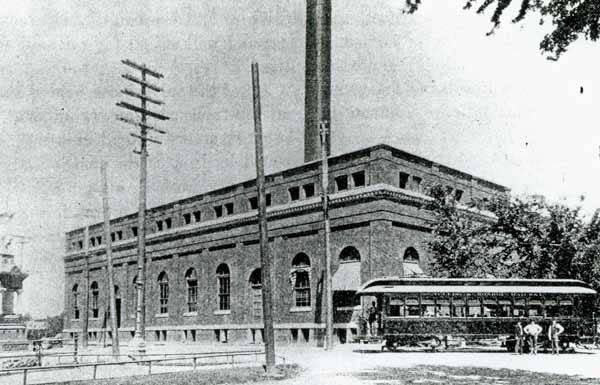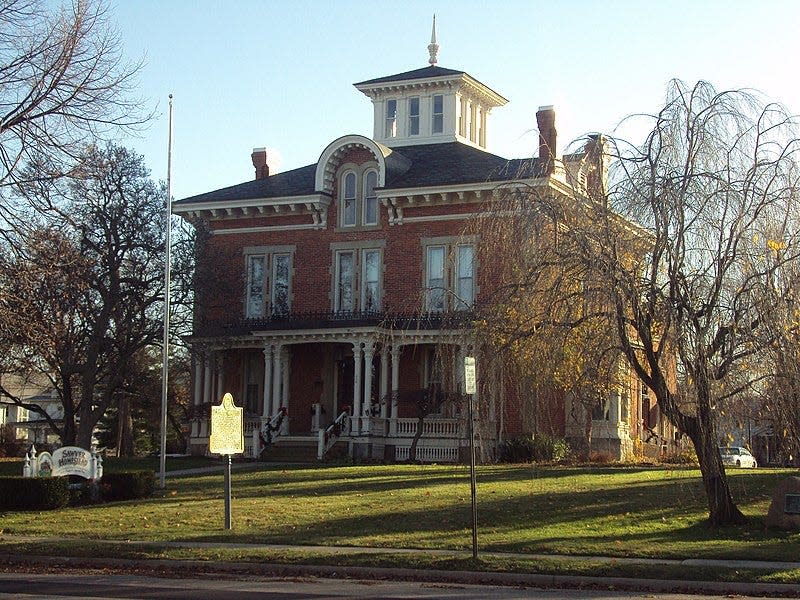Monroe County history: Monroe's origins can be traced to the Navarre treaty

According to the narrative of "The Pageant of Historic Monroe", one can trace Monroe’s origins back to a key document – the treaty Francis Navarre made with the Potawatomi tribe signed on June 3, 1785, according to the book "Monroe: The Early Years, an Arcadia Images of America" series history book written by Craig and Kimberly A. Hutchinson in 2004.
A total of 20 acres was located on the River Raisin’s south side was part of the initial transfer.
After locating his log cabin on the site where the Sawyer Home sits on East Front Street (used as General Wayne and St. Clair’s headquarters during the War of 1812), Navarre also, around this time, established pear orchards for settlers (the trees which often grew to heights of 120 feet and bore nearly 50 bushels of fruit); each settler would set the trees in groups of 12 – said to represent Jesus Christ’s Apostles, with one set a part from the group to represent Judas the Betrayer.
Navarre’s Monroe deed was originally written in French and executed by a group of Potawatomi Indian chiefs (identified within the document). Here is the text of the deed: "We, the principal chiefs of the Village of the Potawatomis, to wit: Askiby, Mongoagon, Minguinan and Ona-oni-attene, Nana-onito, Sac-co-ni-binne, as well, our names as by the consent of our village, declare that of our good will we have conceded to Francis Navarre, surnamed “Tichigoy”, and to James, his brother (both our allies), all the extension of land which belongs to us upon the bank of the River Raisin, formerly called Namet Cybi, commencing to take from the river road (as filled in court) to the end of the prairie, going up the stream Namet Cybi, allowing more or less twenty acres in width by eighty or one hundred in depth: the whole may be determined by a line lengthwise south and a league north in width, going up the river Namet Cybi, in order to possess on the whole of all propriety by themselves and their representatives. In faith and testimony of which we have freely made our ordinary marks as signature in Detroit, June 3, 1785," [Signed] Askiby (represented by a rabbit); Ona-oni-attene (represented by a fish); Sac-co-ni-binne(represented by an elk); Minguinan (represented by a bear); Nana-onite (represented by a beaver; Charles Campeau Henemargintemond.
Each symbolic animal signature was signed upside down to indicate the animal has died. In addition, Pierre DeCompt De Labady signed as an undersigned witness using a cross to represent the “present contract countenanced.”
Around this time nearly 100 French settlers migrated from Canada and settled on the north side of the River Raisin to form what would be Frenchtown. The treaty for this land – made with representatives from the Ottawa, Chippewa, Delaware, and Wyandotte tribes – was six miles wide from the River Raisin to Lake St. Clair. Another eight-mile segment included settlers extending along the Otter and Stony Creeks.

These French settlements were scattered but were considered successful because, as the Pageant of Historic Monroe book indicated, “…of their friendly attitude toward the Indians seldom incurred their enmity and generally lived in peace and security.”
As was profiled recently on these pages, the area of the Wayne Stockade (1805) was the site of the first American settlement on Michigan soil (1793). Later, Captain Moses Porter established a block house in 1796 which was later burned by British Captain William Elliott on orders from British Colonel
Henry Proctor. This took place in August, 1812 and, later, the corner of Monroe and Elm site housed the Toledo & Monroe Railway trolley power house.
Tom Adamich is President – Visiting Librarian Service, a firm he has operated since 1993. He also is Project Archivist for the Greening Nursery Company and Family Archives.
This article originally appeared on The Monroe News: Monroe County history: Monroe's origins traced to Navarre treaty

